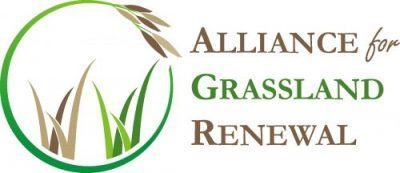It has been another good month for us in Southern Virginia. Our wet July turned to a not too wet and not too hot August, with just enough rain so that we were never dry. Over the last twenty years we have done everything we can to discourage the growth of tall fescue including fertilizing only in the fall (if at all), grazing hard during early spring, and encouraging plant diversity. It is at times like this that all the work over decades comes together, and toxic fescue retreats until the weather turns cool.

Using frequent cattle moves and high animal density has made a big improvement in our ability to grow grass without fertilizer inputs. In a nitrogen response trial we did a few years ago with Dr. Alan Franzluebbers we actually had little response to added nitrogen on a mostly tall fescue stand in the fall because the yield of the zero nitrogen treatment was so high. Soil test biological activity in that study was very high and that is a good indicator that there are a lot of nutrients cycling in the soil which of course improves plant growth.
One important aspect of our system is the presence of a lot of clover, which helps build nitrogen reserves. Stopping spring fertilization has dramatically increased our clover stands. About 20 years ago we frost-seeded Will Ladino Clover, and now we have a medium sized white clover that is very persistent. For the last 5 years or so we have also had really strong stands of red clover across most pastures, especially as we get into the early summer.
While we have had a big increase in clovers, there are also other less known plants that have made significant strides over this same time. Dallisgrass (a perennial warm-season grass imported from Argentina) is our second most common grass species after tall fescue, and it makes high quality warm-season growth. We have to worry a little about dallisgrass staggers, but if you avoid grazing rank old seedheads with visible infection in late summer, it is something you can manage.
We see a lot of crabgrass in all our pastures depending on conditions at the time it germinates in late spring. When we have a wet winter and sod damage, then crabgrass will be there to take advantage the next summer. We have often put out crabgrass seed, primarily Red River and Quick-N-Big, on winter feeding areas. The improved varieties volunteer in those areas in subsequent years, and you can really tell those “giant types” from the smaller and finer textured “local” crabgrass, which we also have in abundance in some places.
Purple top (Tridens flavus) is a native perennial grass that is really increasing in several of our pastures. The cattle eat it well, and it seems to respond pretty well to rotational grazing. I am also seeing many other species, both introduced and native. Horsenettle, serecia lespedeza, orchardgrass, bermudagrass, gammagrass, bluegrass, hemp dogbane, bahiagrass and vaseygrass are all present in most pastures. The vaseygrass is not desirable, and it came from buying hay out of the southeast part of North Carolina where it is common, but our cows eat it down pretty well. It is important to remember that when you buy hay from off your farm, you also buy the weeds that come along for the ride!
In some pastures we have a really interesting genus of native perennial legumes called Tick Clover, or Tick Trefoil (Desmodium sp.). You probably know of them as “weeds” with seeds that stick to your pants and socks in the fall. I have identified 4 different species in one set of pastures that are particularly diverse. These pastures were never seeded in common forages, but rather have just developed through volunteer plants after the fields were abandoned as cropland. They also have not been sprayed with herbicides for at least 30 years. Kentucky-31 tall fescue was present as grassed waterways on this land, so tall fescue has spread across the whole area. However fescue is far from the majority of the plants. Purple top, tick trefoil, hemp dogbane, bahiagrass (coming in from the roadsides), orchardgrass and dallisgrass are all present. We have been grazing these pastures recently, and the preferred plants appear to be Panicled Tick Trefoil (Desmodium paniculatum), hemp dogbane and purple top grass.
As we approach fall, all these summer plants are growing and maturing at high speed. We have made some hay to try to reset the crabgrass on several pastures as cattle don’t like the fine textured varieties after they mature. We also are busy clipping behind the cows so we develop a better quality stockpile for this winter.
Last week we awoke to the first really cool morning we have had since last spring and it was such a refreshing feeling. I am glad each day for all the blessings the farm brings, and I am also thankful for the opportunity to face all the challenges that also arise nearly every day.
I encourage you to get out in your pastures, learn what major and minor species of plants are present, and learn what is known and what is not known about each one. To learn more about pasture plants visit https://cefs.ncsu.edu/extension-and-outreach/amazing-grazing/pasturland-plants/
~ Matt Poore, NC State and Alliance for Grassland Renewal
The Alliance for Grassland Renewal is a national organization focused on enhancing the appropriate adoption of novel endophyte tall fescue technology through education, incentives, self-regulation and promotion. For more resources or to learn more about the Alliance for Grassland Renewal, go to www.grasslandrenewal.org
